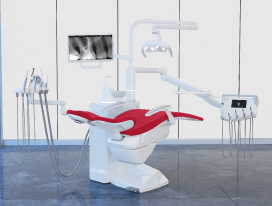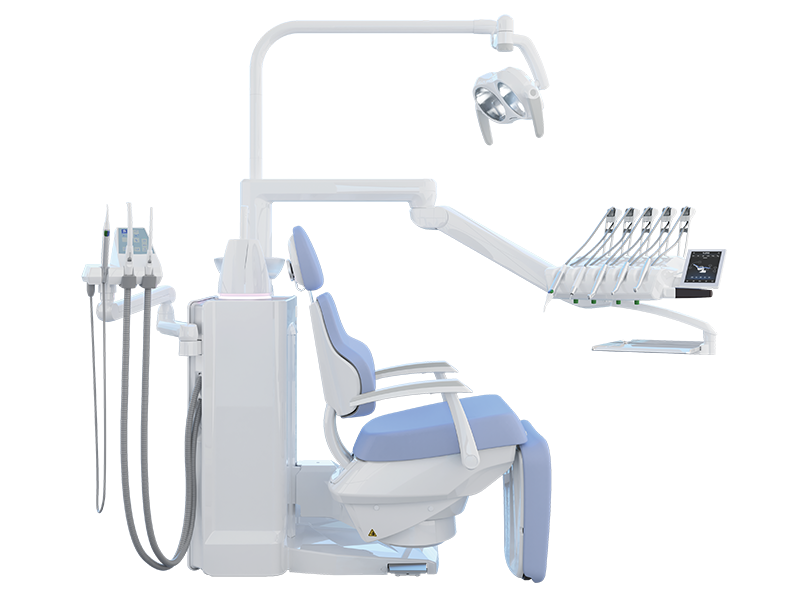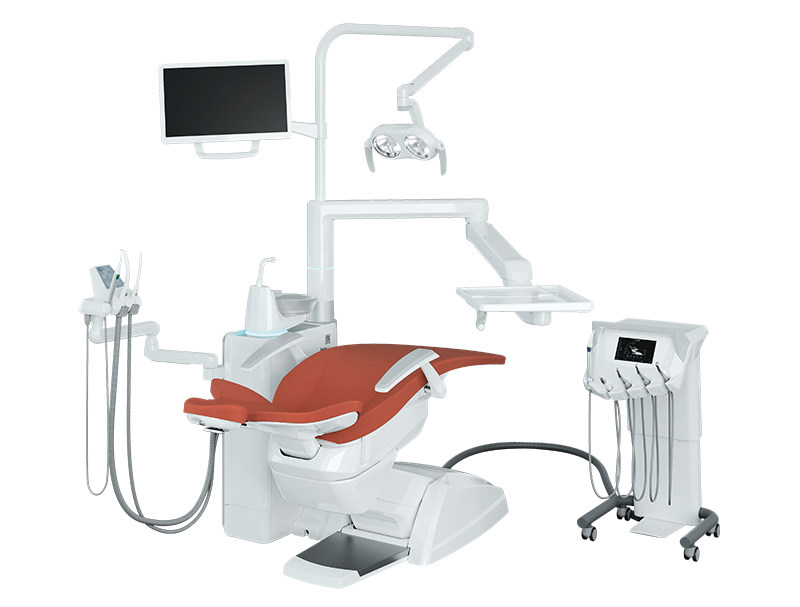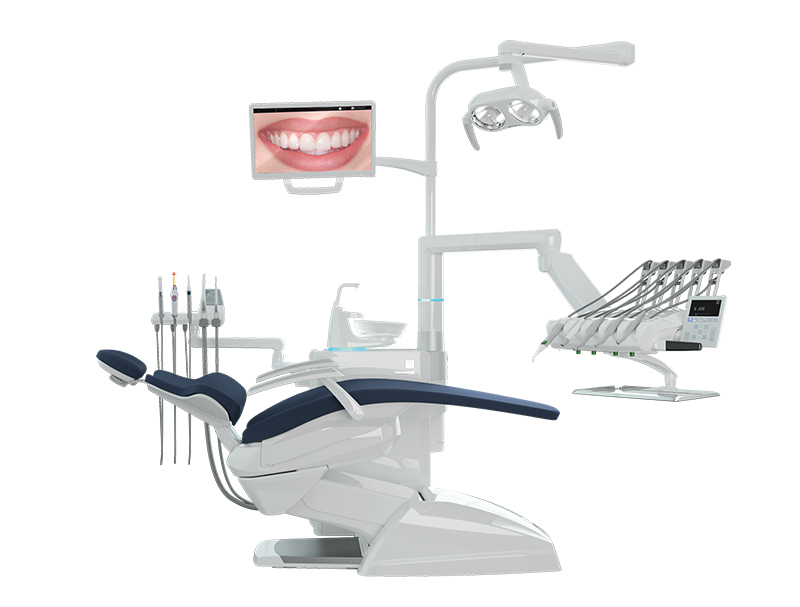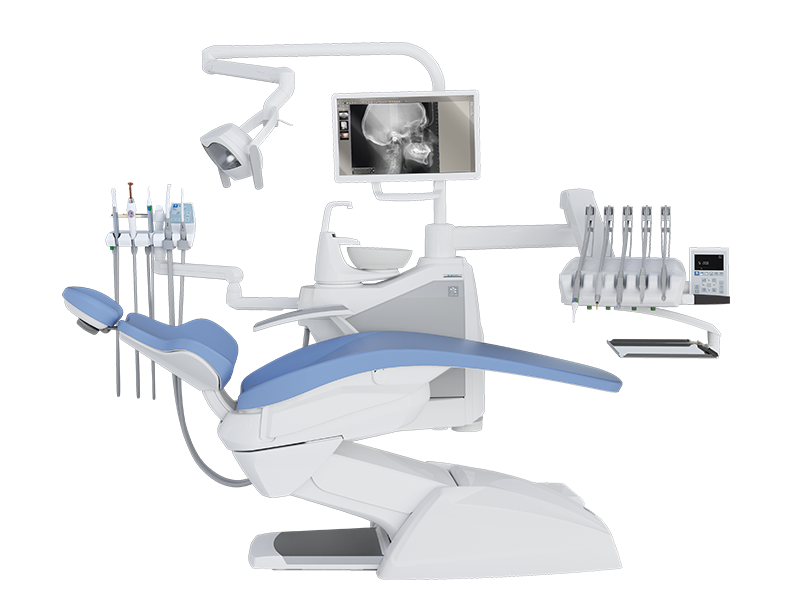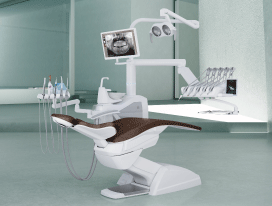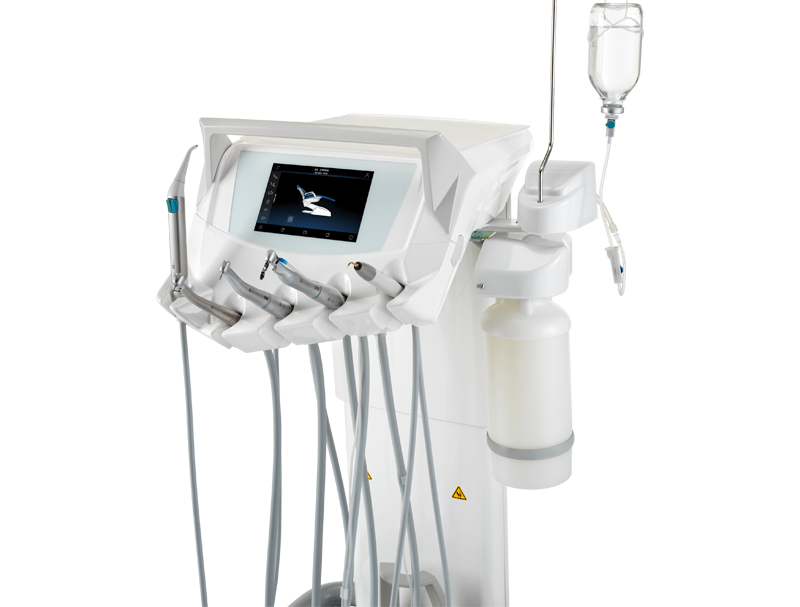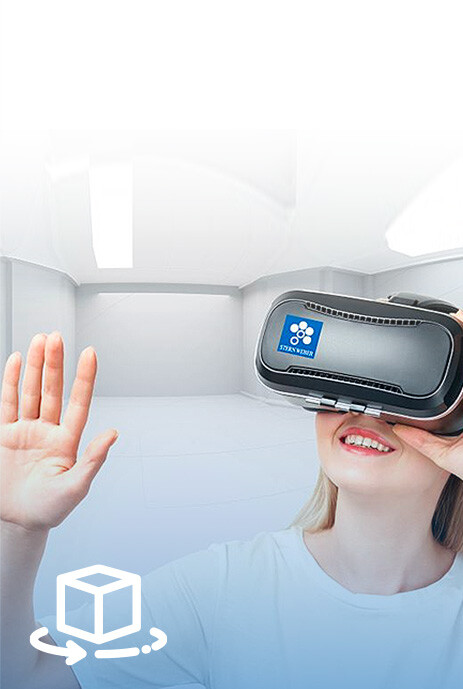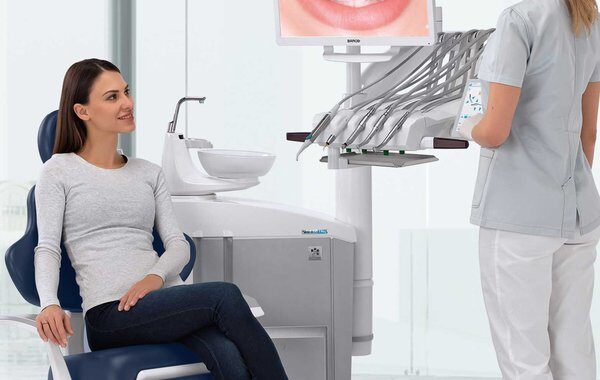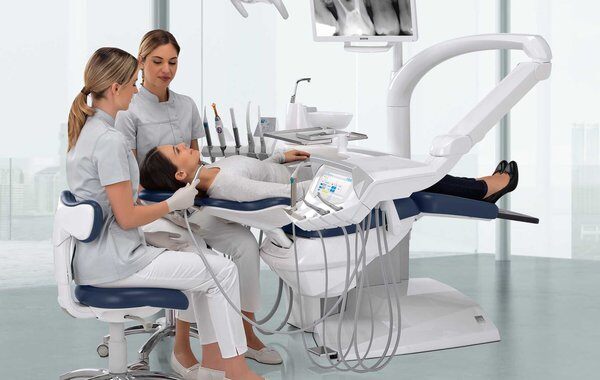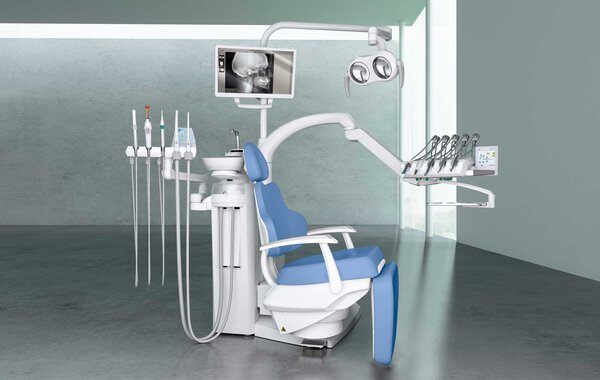S380TRC Communication and comfort

The S380TRC focuses on the importance of the dentist-patient relationship
Communication with the patient is a key component of dental treatment. Indeed, from a treatment viewpoint, it is the foundation on which effective relationships are built: relationships that make patients feel understood, treated with care and involved in the exchange of information concerning their treatment.
Nowadays, tools that let dentists manage this aspect effectively are a must, as they make the surgery a more welcoming place for patients and lighten any treatment-related stress. This aspect is particularly relevant for patients with mobility difficulties or the elderly.
With its rotary seat and articulated leg rest, the S380TRC ensures optimal comfort
The latest-generation patient chair has been designed to perform synchronized movements. Its ‘home’ sitting position provides patients with extremely simple, natural access. In addition to meeting the needs of older persons, it also makes access easier for patients with limited mobility. The same sitting position - used to discuss the patient’s clinical situation - can be adjusted within a wide height range, which also makes it suitable for orthodontic treatment; moreover, since there are no obstructions around the chair, the S380TRC dental unit lets dentists perform extractions with greater ease and comfort.
Simply by calling up a programme, the dentist can rotate the seat from the access position to the operating position; simultaneously, the backrest is automatically lowered and the footrest extended from the end of the leg rest.
In addition to the key features of hard-wearing upholstery (also available in a Memory Foam version), a lift capacity of up to 190 kg and a silent motor with soft-start and soft-stop dynamics, dentists can also count on independent seat and leg rest mechanical control.
The outcome? Maximum comfort and reassuring dentist-patient communication.

